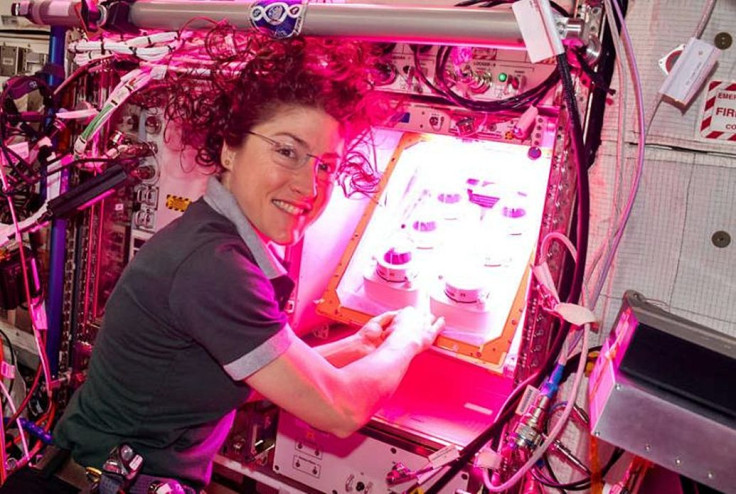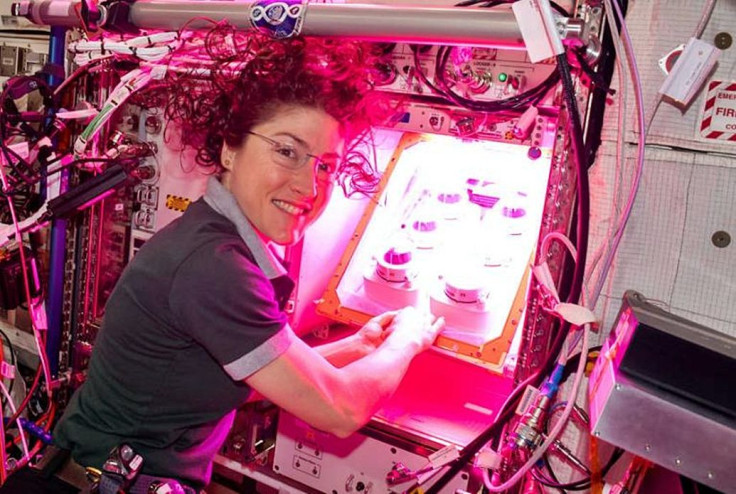NASA Wants To Grow More and Bigger Plants In Space

Astronauts have to eat, and growing their veggies in spacecraft on long planetary voyages or on the surface of an airless planet such as Mars is a must for survival. Problem is, growing plants in less than ideal conditions remains a huge challenge.
NASA has finished testing a new and apparently much better system for growing more vegetables in space aboard the International Space Station (ISS).
The system called PONDS (Passive Orbital Nutrient Delivery System) will make it possible to grow potatoes and other nutritious crops that demand fairly large amounts of water. PONDS units are less expensive to produce, have more water holding capacity, provide a greater space for root growth and are a completely passive system. This means PONDS can provide air and water to crops without extra power.
It’s intended to replace the present method of growing plants that uses seed bags called pillows. Astronauts water these pillows using a syringe. Using this method makes it difficult to grow certain types of "pick and eat" crops beyond lettuce varieties.
The experiment was a partnership involving NASA, Techshot, Inc., the Tupperware Brands Corporation, fluids experts at NASA's Glenn Research Center and Mark Weislogel at Portland State University. Howard Levine, chief scientist of NASA's Utilization and Life Sciences Office at the agency's Kennedy Space Center, developed the PONDS prototype.
The just ended 21 day-long experiment called Veg-PONDS-02 involved 12 PONDS units. The Veg-PONDS-02 payload arrived at the ISS on April 9 in the three new design configurations. Six of the units have a clear design that allowed researchers to observe the performance of water in the units during the experiment.
All units contain red romaine lettuce seeds and were placed in the two ISS vegetable production systems known as Veggie to test growth performance. This experiment tested the performance of the three alternative design methods in space to see if the water management issue initially discovered during the first PONDS experiment was adequately addressed.
NASA astronaut Christina Koch began the experiment by filling the upper reservoir on April 25. Canadian Space Agency (CSA) astronaut David Saint-Jacques filled the PONDS unit lower reservoir on May 2 and documented how water behaved in the system.
Dave Reed, Techshot's Florida operations director, and his team worked closely with material scientists and mechanical engineers with Tupperware to design and mold components that make up the PONDS-02 units.
"We needed something that was molded well, molded precisely and molded out of plastics that were compatible with edible material," said Reed. "They brought all this huge body of knowledge to us."
Levine said they took a step back, evaluated different aspects of the design, and together with water fluid experts from NASA, “came up with three alternative designs, each of which had a number of components we wanted to test in space.”

Six of the PONDS units will be returned to Earth on SpaceX's 17th Commercial Resupply Services mission for further analysis.
"PONDS was an opportunity to do something that no one else has done before," said Reed. "People have been growing plants in space since the Apollo era, but not like this."
Published by Medicaldaily.com



























